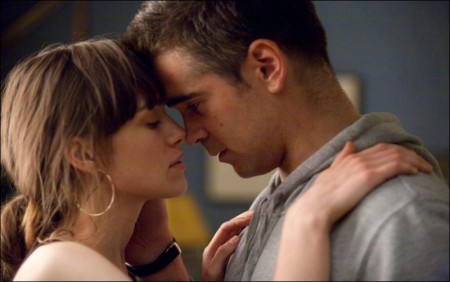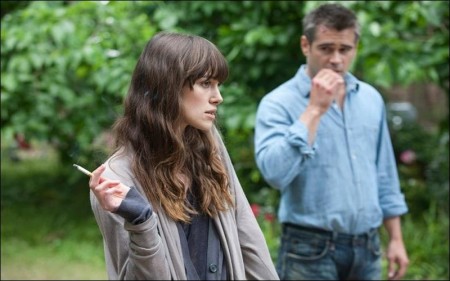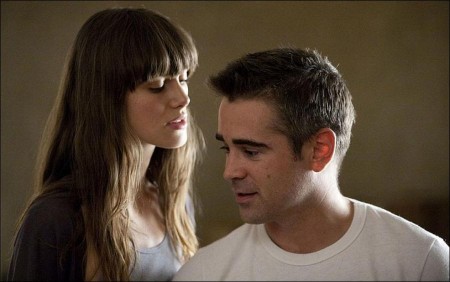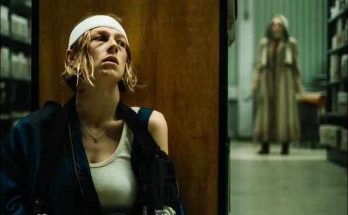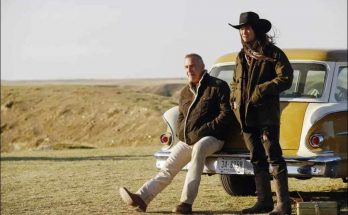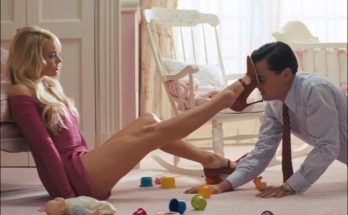Working with Academy Award-winning cinematographer Chris Menges, William Monahan has created a visually arresting, ’60s-inflected portrait of a city he has a special affection for, from the grimy council flats to the upscale environs of Holland Park. “I’ve always loved seeing London on film,” Monahan says. “But I’ve never seen it look better than Chris Menges has made it look for this film. He doesn’t have two Oscars for nothing. The photography is absolutely stunning.”
Well known as a uniquely visual screenwriter, Monahan also put in a decade working closely with Ridley Scott and Martin Scorsese on all phases of production. And according to Quentin Curtis, Monahan demonstrated an extraordinary aptitude for the logistical and technical side of filming. Ben Chaplin was struck by Monahan’s attention to the smallest details. “He is a very visual director,” says the actor. “He’s had specific visual ideas for everything including the costumes. He had it all from the big picture down to very fine details.”
Monahan saw wardrobe as another way to fine-tune the complex and sometimes paradoxical characters he had created on the page. “It was very important to me to thwart the usual class expectations,” he explains. “When we were addressing Mitchel, Odile Dicks-Mireaux, our costume designer, first suggested moonboot sneakers and a nylon track suit because he is supposed to be a south London thug. But Mitchel is a paradox, like many of my characters. They tend not to be what you first expect. So I said, ‘No, let’s go to Saville Row, because any class expectations are going to be completely foxed.’”
Knightley was initially concerned that her character might be seen as what she calls “more of an L.A. type,” but Monahan once again rejected the conventional. “We were on the same page from the first meeting,” she says. “We all felt that the very tight jeans and high-heeled, beachy look was the wrong way to go. She’s somebody who is disgusted with that whole side of it. She’s rejecting it, so we went for a more androgynous look with men’s trousers, brogues and darker colors.”
Knightley’s only glamorous appearance in the film is the iconic photograph taken by seminal British fashion and celebrity photographer David Bailey – the model for David Hemmings’ character in Antonioni’s BLOW-UP. Bailey photographed everyone who was anyone in London during the Swinging Sixties, from the Beatles and Jean Shrimpton to the infamous twin gangsters, Ronnie and Reggie Kray. “You see the photo of Charlotte all over London in the film,” says Knightley. “But you never actually see her dressed up; you never see her with any make-up on. The photograph is part of what she’s rebelling against, being painted and sold.
The iconic photo, posted on walls, buses, electronic billboards and more, is a symbol of the power and the perils of celebrity, says Monahan. “‘It is intentionally unexplained. There is no product mentioned. You just see the photograph repeated wherever you go. And it was very important to me that we get the right photo,” says the director. “We had to have David Bailey. When we were talking about how to photograph Keira, I said, ‘She’s a very beautiful girl.’ And he said, ‘Beautiful women are like red buses to me.’ Bailey’s said that one before.”
The film’s action is set to an original score by Sergio Pizzorno, and a blazing soundtrack of music from the ’60s. It’s packed with classic tracks such as The Yardbirds’ “Heart Full Of Soul,” The Rolling Stones’ “Stray Cat Blues,” The Box Tops’ “The Letter,” Bob Dylan’s “Subterranean Homesick Blues,” plus several traditional airs performed by Dominic Murphy, and contemporary music by British band Kasabian.
“The music is very important to the film,” says Monahan. “The first time I ever thought of shooting a film, I was a teenager in London. Even then, I imagined the movie starting out on black with the riff from the Yardbird’s ‘Heart Full of Soul’ – and now I’ve done it.”
“Working in London was a special thrill because it’s the center of what I do for a living and it has been since Tudor times. Our last day of shooting in London was about five yards from the Globe Theater, under Southwark Bridge,” says Monahan. “I didn’t mention it to anybody, but that was important to me. When you’re writing drama in English for a living, it’s nice to be near the source.”
Related Link: Read the Full Production Notes for london Boulevard
Visits: 88
